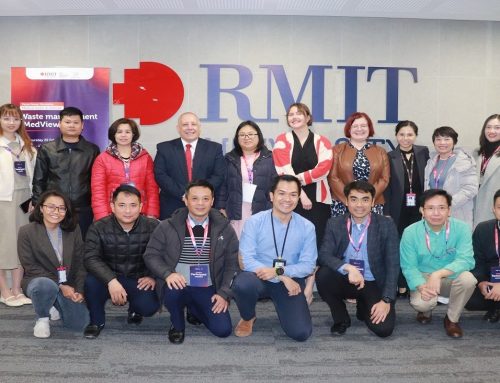Every once in a while, we have guest writers here on our blog. This time we have the joy of having Ana Laura Santos writing about her article and findings and how this can be implemented in practice. Here are her key findings from her article Systemic barriers and enablers in humanitarian technology transfer in the Journal of Humanitarian Logistics and Supply Chain Management.
The concept of systems thinking is rather novel in the field of transfer of medical technology in humanitarian settings. Some of the lessons derived from this theoretical framework are described in the referred publication.
Humanitarian organizations that go about transferring medical technology, i.e. anything from an x-ray machine to a complex process like the cold chain, are usually result-oriented. There is a lot of focus on delivering (and achieving) fast results, because that is thought to be the most important and efficient approach. However, considering the examples mentioned by experts in the field, this approach reveals to be rather inefficient because of the diversity of contexts, unpredictable nature of work and the lack of understanding of key relationships in the processes being carried out. In practice, the appropriation of systems thinking principles can motivate and guide the shift of this result-focused approach to one that is focused on a life-cycle, holistic perspective of technology transfer, and logistic operations. One that requires flexibility, coordination and collaboration.
A flexible planning and orientation means that instead of solving problems, the humanitarian organization manages solutions. This allows projects to take a direction lead by planners and users at the same time. It means including buffers in the planning to deal with diversity and uncertainty and allowing ad-hoc decisions to be made. Although more maintenance intensive, this way of planning may result in a better match between the organization’s goal and the effective possibilities on the ground. Coordination needs special attention to the interrelations between the many steps, individuals and hierarchy levels in a process (e.g. procurement, transport, customs clearance etc). If there are inconsistencies between these interrelationships, a plan B is devised and no work falls under “it’s not my job”. Finally, participatory approaches may lead to potentially more innovative and sustainable project solutions. A clear definition of roles and responsibilities and a decision maker at all levels and steps are essential to allow the inclusion of different internal and external perspectives and the construction of shared goals (e.g. collaborations with companies or national governments).
Despite a number of relevant barriers to the implementation of this approach including financing and bureaucracy, organizational structure, overloaded staff, trust amongst stakeholders etc., there are opportunities to begin with, pilot projects and partnerships to experiment and learn. Systems thinking could help to create a designated space for the formulation of original, synergetic solutions to address the barriers faced in technology transfer.
Link to the Journal of Humanitarian Logistics and Supply Chain Management: http://emeraldgrouppublishing.com/jhlscm.htm
Link to the article: http://dx.doi.org/10.1108/JHLSCM-12-2014-0038
– A.L.R. Santos
Ana Laura R. Santos , Linda S.G.L. Wauben , Richard Goossens , Han Brezet , (2016) “Systemic barriers and enablers in humanitarian technology transfer”, Journal of Humanitarian Logistics and Supply Chain Management, Vol. 6 Iss: 1, pp.46 – 71




